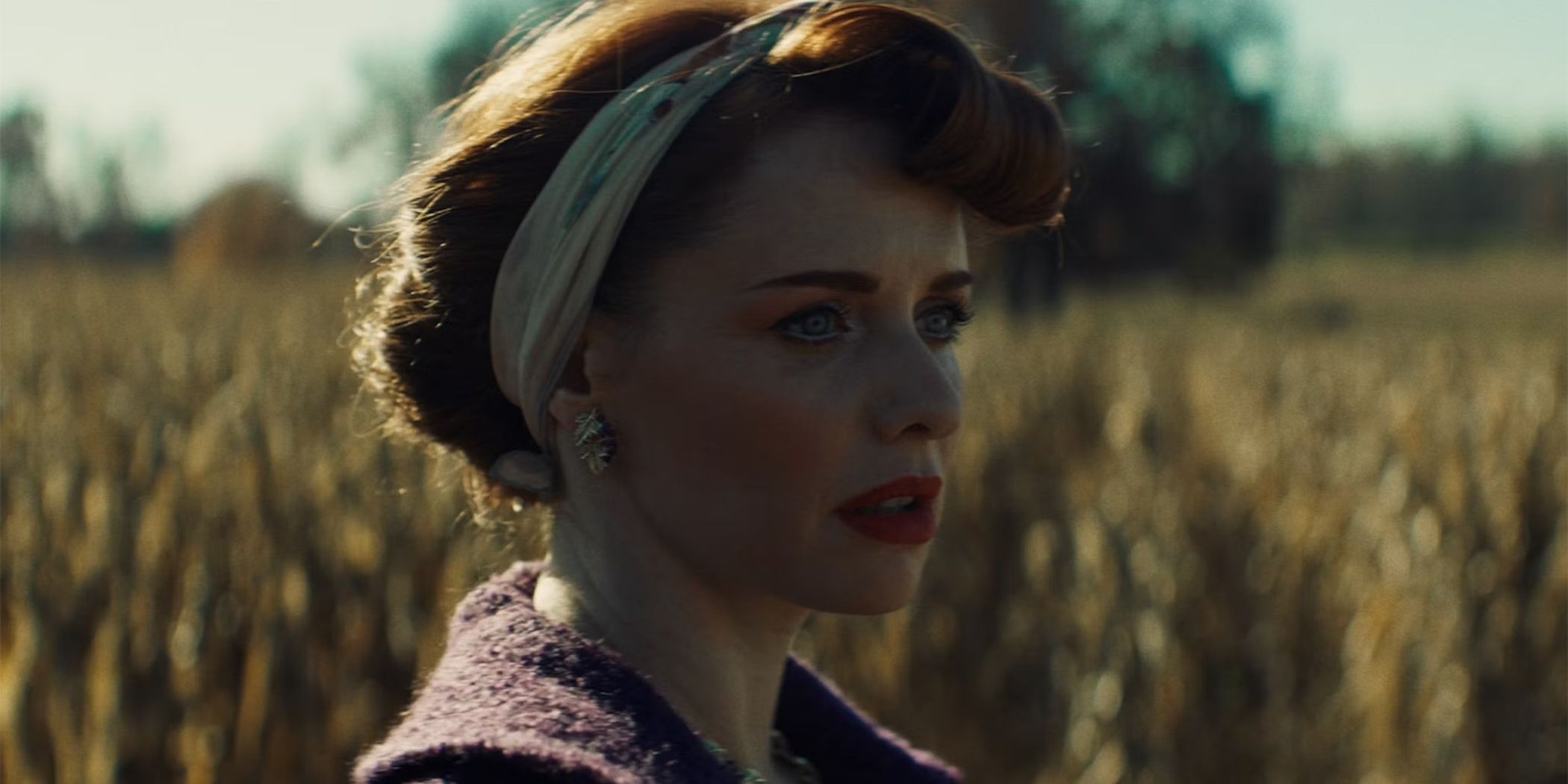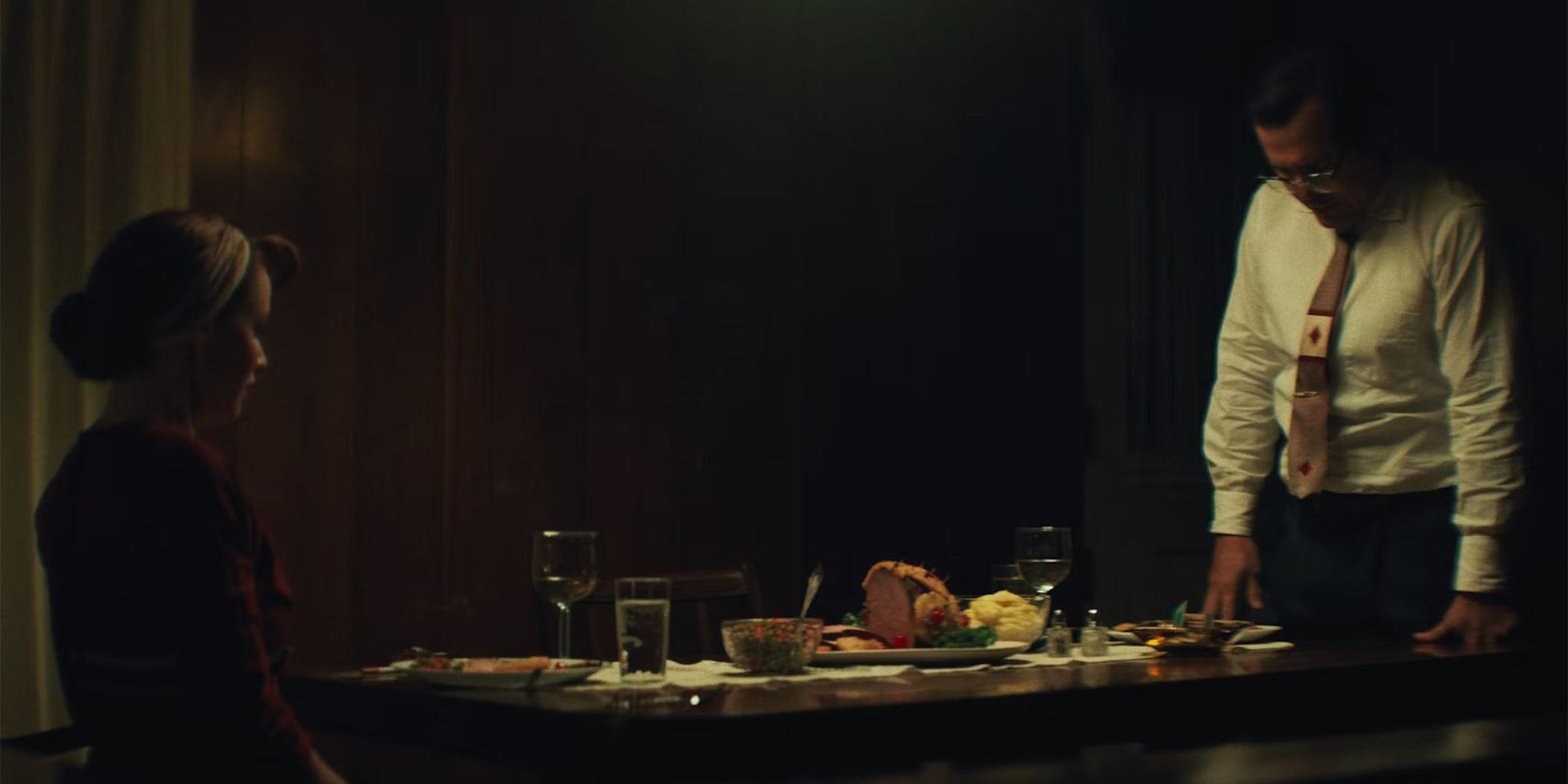The Big Picture
- Collider's Steve Weintraub hosts an exclusive Q&A with the cast and creator of The Network's original historical fiction series, The Green Veil.
- Star John Leguizamo, showrunner Aram Rappaport, and co-stars John Ortiz, Hani Furstenberg, and Isabelle Poloner sit down to discuss their new series and the challenges met getting it greenlit.
- They also talk about telling marginalized stories in Hollywood, working with intimacy coordinators, why they wanted to be a part of the series, and creating an all-new free streamer, The Network, specifically for The Green Veil.
Ahead of the official launch of the new free streaming service, The Network, Collider's Steve Weintraub sat down with the cast and creator of the streamer's first original series, The Green Veil. The historical thriller stars John Leguizamo (Romeo + Juliet) in his first-ever starring role for a television series, written specifically with him in mind by producing partner and series showrunner and creator, Aram Rappaport (The Crash). In addition to Leguizamo, The Green Veil also stars John Ortiz (Silver Linings Playbook), Hani Furstenberg (American Gods), Irene Bedard (Avatar: The Last Airbender), and Isabelle Poloner in her debut role.
The Green Veil is an eight-episode series that centers around Leguizamo's Gordon Rogers, a Latino federal agent attempting to balance the ideal American Dream with his own inner turmoil and oppression of 1950s America. The show brings up questions of identity, particularly through "this self-loathing, self-hating Latin American who was doing everything by the book." It looks at American history through a sci-fi lens, but amplifies the stories that aren't often given a voice in movies and television. In his own words, Leguizamo says:
"Latin people are 20% of the population, Black people are 14%, and the stories aren't being told, and they're not being greenlit. It's crazy. The story of Native Americans — You pitched the story everywhere, and to deaf ears and a lot of smiles, but no one's greenlighting it. So you have to take matters into your own hands, and that's what Aram did."
So what took so long for Leguizamo, who's storied career has made him a household name, to lead his own television series? In this Q&A following our advanced screening, the cast discusses the challenges they faced getting their series onto the screen. They talk about the struggle of getting marginalized people's stories told, so much so that they created their own streamer (The Network) in order to greenlight it. They talk about filming 20 pages worth of dialogue a day, working side-by-side with an intimacy coordinator, and how The Green Veil does what other period pieces like Mad Men won't. For all of this and tons more, check out the full Q&A in the video above, or you can read the transcript below.
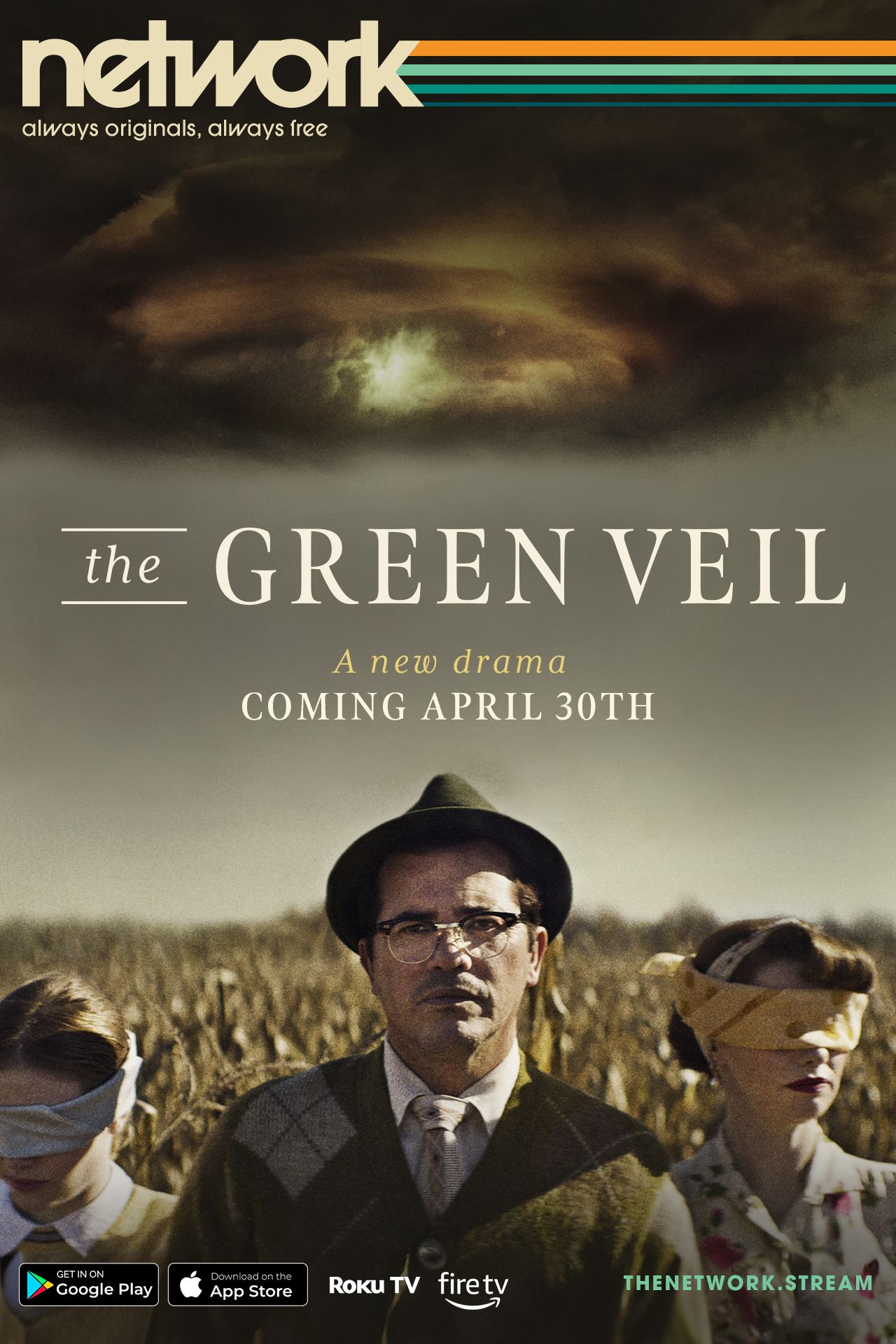
The Green Veil (2024)
Anthology series concerning oppression in America.
- Release Date
- April 30, 2024
- Cast
- Irene Bedard , Steven Boyer , Hani Furstenberg , Isabelle Poloner , Marco Torriani , Jessica Marza , Nick Westrate , Anni Krueger
- Main Genre
- Drama
- Seasons
- 1
Why 'The Green Veil' Is John Leguizamo's First-Ever TV Leading Role
"It's been difficult being a Latin man in the industry in Hollywouldn’t."
COLLIDER: John, this is your first dramatic leading role in a series. How did it take this long?
JOHN LEGUIZAMO: You know the business. You know how Hollywood works. It's been difficult being a Latin man in the industry in Hollywouldn’t. It's just a fact. There's a lot of talk about doing Latin stories and people-of-color stories, but it's a lot of talk. There's a little more inclusion in terms of our appearance in movies and commercials and TV series, but our stories are still not being told. So, it's hard to get a role of this complexity in the leading role. They're hard to come by. There's a lot of sidekicks and smaller parts, but not important parts.
Isabelle, this is your first big role. This is a big deal for you. What is it like being a part of a show like this and getting cast?
ISABELLE POLONER: Well, this is my first job ever.
ARAM RAPPAPORT: You did great. You rocked it.
POLONER: Thanks. I had an amazing experience being on the set and doing the show with everyone. I feel really grateful I was able to work with such talented actors and have Aram as a director, who's incredible.
'The Green Veil' Would Be Impossible Without The Network
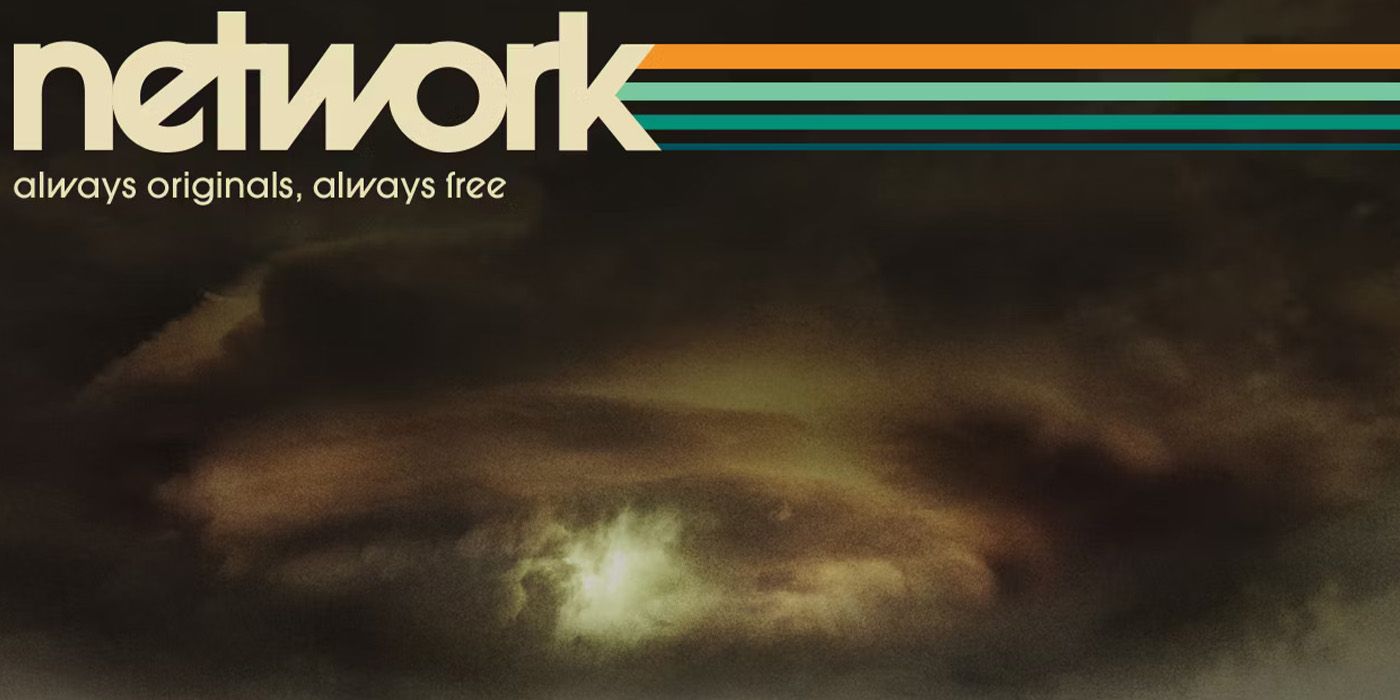 Talk a little bit about The Network, because what people don't realize is how instrumental you are specifically in The Network.
Talk a little bit about The Network, because what people don't realize is how instrumental you are specifically in The Network.
RAPPAPORT: Going back to the question of why has it taken John so long to play a leading role, or to find roles like this, I mean, we made the show and had to create a network to find a home for it. I think that was the important implication for this whole thing that's ballooned into what will be eight original shows this year. Originally, we set out to make a really unique show that told historical fiction but was super thought-provoking, and luckily, we had John Ortiz who came in and was willing to roll up his sleeves and trust us in that indie space initially. Between the two Johns, they were instrumental in anchoring how we looked at oppression through this lens, and they anchored the veracity of this. That was something that no one was really gonna green light. The tone is unique, and you can either love it or hate it. There's comedy, there's obviously immense drama, but this is something where we wanted to tell the story in this way, and to do that, we had to greenlight it ourselves. So, the idea was to create a network. Hopefully, out of that stems compassion for other filmmakers and showrunners looking to do the same thing, because we know that there's a lot of interesting stories that just don't get told.
LEGUIZAMO: It’s crazy. Latin people are 20% of the population, Black people are 14%, and the stories aren't being told, and they're not being greenlit. It's crazy. The story of Native Americans — this is based on two historical facts that the Aram dug up — that in the ‘50s, [governmental agencies] were coming up with excuses to take Native American children from their homes so they couldn’t inherit the land so they could give it up.
RAPPAPORT: To assimilate as quickly as possible.
LEGUIZAMO: Right. And you pitched the story everywhere, and to deaf ears and a lot of smiles, but no one's greenlighting it. So you have to take matters into your own hands, and that's what Aram did. It's incredible what you've done. The Network is free, and free is for me, always, [laughs] and it's thenetwork.stream.
What was it about this material that said, “I need to be a part of this, I wanna do this?”
RAPPAPORT: Is that not evident?
JOHN ORTIZ: Well, it just hasn't been told. Living now, I think we can all agree that it's complex, to say the least, and mind-boggling. That old saying of, like, “You gotta look back sometimes to figure shit out now,” holds true, to some extent, and especially if it has to do with historical events. I'm a fan of historical fiction — I'm a fan of history. I'm a fan of the kind of history that wasn't in my history class, which is what this is about. Then, of course, when I heard that John was gonna lead in it, the other “cute,” in quotation marks, aspect about Hollywood is that even if you do have one John, you can't have the second John in the same project. [Laughs]
LEGUIZAMO: My god, it’s so true.
ORTIZ: I don't care how small the other John's role is.
LEGUIZAMO: It's so true, man. It's so true.
ORTIZ: So it took us 30 years to actually be in a project where we had scenes together where I could see his face. So that was a big thrill for me because he truly is — the word gets tossed around lightly, but John's iconic for all the right reasons, and he really is a legend, so I just wanted to play with him.
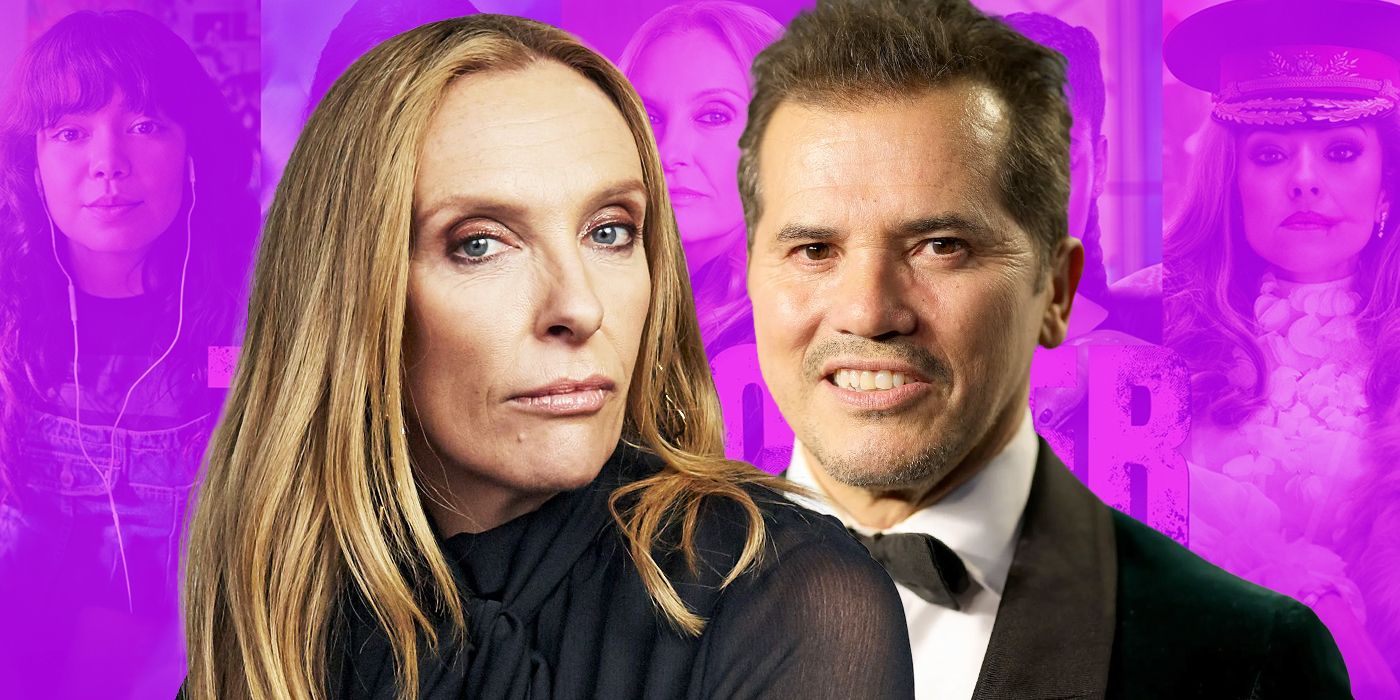
'The Power's Toni Collette & John Leguizamo on Exploring Real-Life Fears Through Science Fiction
"To be able to contemplate these issues in this way is so necessary and healthy," says Collette about the show's social relevancy.LEGUIZAMO: I mean, it's dark, but it's still kind of fun to act it.
ORTIZ: And then the timing of it. I'm not sure if you guys know, but we shot this in 2020, leading up to the election.
LEGUIZAMO: And COVID.
ORTIZ: We were in upstate New York, and there was something about the juxtaposition of apocalyptic feelings mixed in with this bubble of community that was built around this story that meant so much to all of us that felt reassuring. It felt inspiring. It felt like something I was honored to be a part of.
RAPPAPORT: I have to just to add to that, I was writing this and kicking it to John because I knew John was gonna play this role, and we're going back and forth, and I said, “Who can we bring in to anchor this?” The John Ortiz role, basically. Because you have to be so forthright and trusting and immediate in how you play that, and it was gonna be so important that it wasn't this stereotypical moment for a Latin actor or a Native actor to just be victimized. There needed to be humanity there. So we talked about this a lot, and John said, “It's gotta be John Ortiz. He's the only one” We did spend some time kicking John some scripts and talking about it, and I think your thoughtfulness through that prep process teed us up for a lot of trust here. Without that trust, I don't think there would have been the play and the ability for you to emotionally throw yourself into that and lose your kid and be able to be there in the moment, because we shot very quickly. There wasn't a lot of time.
LEGUIZAMO: How many days did we shoot this in?
RAPPAPORT: I mean, we were shooting 20 pages a day or so.
LEGUIZAMO: 20 pages a day. Of dialogue. A lot of dialogue. [Laughs] That's rough. The quality is still there. That's what's crazy. Usually when you're doing 20 pages a day there, there is a loss of quality, but not here because everybody was so committed and so mad prepared. There was never a wasted moment, and every moment was electric. The cast that Aram assembled here is so powerful, and a credit to all of you because it was so difficult and so harrowing, and all of you showed up like troopers and champs.
Hani, can you talk a little bit about what it was about the role?
HANI FURSTENBERG: Mabel, for me, is a character that I very much can see myself in. She's a strong woman, a feminist before her time. I can imagine myself being a woman of the ‘50s and being one of the 1,000 pilots. I would want to imagine myself that way. It’s definitely a story, on the women's side of the story, that I very much wanted to tell. I love the fact that everything is so held back and that you're not allowed to really say anything that you're feeling. I mean, not only is she going on this journey where everything is a secret and where she's coming up with these things on the fly and trying to get all of this information and trying to figure everything out, but also, everything in her real life at home with John, everything is suppressed, everything is held back. You have to kind of have this facade constantly. That is very intriguing to me and exciting and fun — the tension. I like playing with things like that.
LEGUIZAMO: Everybody was oppressed in the ‘50s — Latin people, Black people, Indigenous people, white women.
RAPPAPORT: This is a story about identity overall. Everyone had a hidden identity. John's character wanted to be something different, both Johns’ characters, the women. I think that's the most relatable part of this. It's not any niche story that you can't relate to.
LEGUIZAMO: Double identities. Everybody's dealing with double identities. It's so interesting, this character, it's not me, it's very despicable and heinous, but what I loved about this project was, we Latin people have been here forever — at least in 1492 — and when you watch Mad Men and all these period movies, we're totally erased as if we didn't exist. I watched Mad Men, and as much as I loved it, I hated it because I never saw one Latin person in New York City in the ‘60s. Give me a fucking break. Not one motherfucker in the street — you couldn't see somebody in the elevator, in the kitchen… That is not New York. That’s not a real New York. Anyway, here was a chance to have real Latin characters, real Indigenous characters. Aram is an incredible ally to us, and allies are really important in this mission to bring Latin stories and people-of-color stories to the screen.
Isabelle, do you want to add a little bit more about what was it about the role that excited you?
POLONER: For me, Abbie is complicated because she had a complicated upbringing and then she is put in this home where she's unwanted and unloved, but she's also sassy and a typical teenager. That was really exciting to me because I was able to relate to Abbie in a lot of ways. She's also very strong and fearless, and I'm honored I got to play her.
RAPPAPORT: When we cast Isabelle for the role, we looked at, like, 1,000 tapes, I think. There were a lot of people that, you know, it's a ‘50s piece and you read the script and you play it very ‘50s, with that over-the-top ‘50s thing, and she came and it was super understated. It almost felt contemporary, but like she could be in the ‘50s. So, I attribute casting her to tonally what this piece is. And I think that's really hard to do. It's such a naturalistic tone that you take in this, and for this to be your first time doing anything, I mean, it was pretty insane.
LEGUIZAMO: Usually when they do those ‘50s movies, they start talking with that clipped American English.
RAPPAPORT: That's what you did when we started. I had to tone you back because you’re so big.
LEGUIZAMO: I love you, Aram.
RAPPAPORT: I was like, “Don't do that! Don't do that dramatic bullshit that you do all the time.”
LEGUIZAMO: No, no, just a little bit.
FURSTENBERG: I remember you doing that, John.
LEGUIZAMO: I couldn't help myself. I really loved it. Tell him the theme of this piece.
RAPPAPORT: Helping you be a better actor.
LEGUIZAMO: And I helped you be a better director. And writer. But tell them the theme about this — Gordo's punishment in this whole thing.
RAPPAPORT: I was working on Latin History for Morons with John — he graciously let me direct that for him — and I didn't really understand much about Latin history, but every night when I would watch the show, I learned more and more and more. I thought it would be really interesting if I could convince John to play this self-loathing, self-hating Latin American who was doing everything by the book and sort of doing exactly what he was supposed to do to be a United States citizen. He was gonna fit in, right? And this character does everything, without giving too much away. By the time we get to the end, he's spit back out and fucked over, and he does everything perfectly. He gives over his life to service and then he's given nothing in return. And I think for me, it was like, “This is where we're at today,” right?
We can veil this stuff in the proactivity that we're doing, or the initiatives, our inclusion initiatives, but the reality is when we started working with Native advisors, Native people, Latin people, they're still put in this box where filmmakers are like, “You can play a nonfiction character, you can play something that's factual, something that a Latin character would have done, or something that a Native character would have done,” but you can't cast a Native American as a lawyer in a TV show. You can't cast someone who's Latin as the lead family man in an NBC show. We're just not there yet. And I think for me, what was super important was to take the risk and try to be an ally and show that there is this fiction that we can bring to minority roles, and it's okay to do that. With the right guidance and honoring culture, we can bring those roles to the forefront, and that's okay. That was something that I'm really proud of, working with Melissa Tantaquidgeon, from the Mohegan tribe, and working with Irene Bedard, who played John Ortiz's wife in the show. We were able to get to a point where we're honoring culture and these characters without directly pulling or appropriating history. That was something that we wanted to do that we really were striving for.
LEGUIZAMO: We Latin people are at a really important crossroads where we're finally accepting that we're Indigenous and accepting AfroLatinidad, and we hadn't been before. So in this piece, it's fascinating because we're going back into the ‘50s, and this man is self-hating. He's in denial of his Indigenous roots, and he is trying to be what the FBI wants him to be. The more he turns on his people… Like when you see on Fox News, you see the border and you see the people who are the border patrol are all Latin people who are seizing these children and seizing these women looking for a better life — sometimes self-hating people of color are the worst perpetrators of crimes on ourselves.
RAPPAPORT: But imagine pitching that show. We're going out, pitching. You walk into a room, and everyone's like, “Oh, I love John. John's won an Emmy, John won a Tony, John was nominated for the Golden Globe. Oh, you played 160 roles in your career. You’re one of my favorite actors…”
LEGUIZAMO: Not all of the great, though.
RAPPAPORT: Until now, thanks to me. But that's neither here nor there.
LEGUIZAMO: Thank you. He’s very needy.
RAPPAPORT: Just like actors. No, but we would go into this room, and people just didn't understand this self-loathing character and what we were trying to do. It's like, we had to literally create a network to be able to offer the opportunity to play a role like this, and it's still mind-blowing today. I'm super grateful that we did, and John trusted this and John [Ortiz] trusted this, and we were able to take it to screen, and Hani and Isabelle. But it's still mind-boggling that after — how old are you now? 102?
LEGUIZAMO: In Hollywood years.
RAPPAPORT: Yeah, after all these years, it still took that to bring this character to the screen.
'The Green Veil's Dinner Scenes Were Some of the Most Challenging
I just want to say I'm really happy that you managed to pull this thing off. For each of you, you see the shooting schedule, you know what's in front of you, you know you gotta make your pages, what day did you have circled in terms of, “I can't wait to film this,” or, “How are we gonna film this?”
RAPPAPORT: Isabelle, you wanna start this one? You can tell the story about how you broke down on day one, had a nervous breakdown.
POLONER: That is true.
LEGUIZAMO: For real?
POLONER: In hair and makeup. It makes me sound like a diva, and I’m not!
RAPPAPORT: No, it was your first day on set.
POLONER: I was very, very nervous because it was my first day. I didn't like my hair, and I went to Aram crying before we started shooting… I was terrified, and at that point I only knew Aram because we had talked before getting to set. Why am I telling this story?
LEGUIZAMO: He put you on the spot, that’s why.
RAPPAPORT: The first scene was terrifying for you.
LEGUIZAMO: Answer this question — what scene were you most looking forward to?
POLONER: Thank you. Our fight scene was my favorite one.
LEGUIZAMO: The one where you were trying to escape out the window?
POLONER: Yeah.
LEGUIZAMO: Why?
POLONER: Because it was exciting. I mean, it's very disturbing, but that's exciting, and I wanted to do that. I wanted some action too.
RAPPAPORT: Hani, your turn.
FURSTENBERG: I don't know. I'm kind of going through the whole thing and taking one day at a time. I can say that looking back, I remember the dining scenes, a bunch of these dining room scenes. I loved the home scenes, all these scenes of us at home, all of our family dynamic. Me and Aram had talked through the script many a time. John and I didn't really get to do much rehearsals, but there became this dynamic without us even really talking about it where we just kind of fell into our places with each other. There was such a freeness in this sterile, intense kind of atmosphere…
LEGUIZAMO: What does that say about us?
FURSTENBERG: I don't know! [Laughs] But it was exciting and it was fun and it was funny. We laughed a lot. It was just really thrilling. And a moment that was difficult [was] something that happens later on, and I had to react. And with John, it really was so easy for me to just kind of watch him do his thing, and me just kind of have to take it in and react. But there was this one thing that really had to rattle me, and I couldn't let him in for some reason. Aram, who just really would let us play so freely, he was like this presence that was there. We knew he was there and we trusted that as long as he wasn't interfering, everything was going well. And I was just listening, and I was like, “I can’t. Something isn’t working. This isn’t real. This isn’t happening.” And he just said, “Come here,” and he took me into the other room, into the kitchen — I don't remember what you said [laughs], but he said one sentence. I remember that it was one sentence, and I just went, “Okay!” And we went back and we did it in one take and we got it. Do you remember the sentence?
RAPPAPORT: “You're fired if you can't get this right.”
FURSTENBERG: And so I left.
RAPPAPORT: And you nailed it.
FURSTENBERG: Nailed it!
ORTIZ: I was really looking forward to the sweat scene because I knew that these guys spent a lot of time and well-intentioned energy to make it authentic. It was also great that we had Irene, who was in the scene, to make sure that it was real. It wasn't acting. It was really hot in there, and it was really intense, and it was other meta level stuff happening. It was really trippy. I was also eager about doing that scene, and it played out in a way that not only met my expectations but far exceeded them, as if I just took acid or mushrooms or something. But it was pure, and it was beautiful, and it was organic. You know what I mean? It was wild. So I was really happy about that, but I was slightly disappointed that it wasn't truly done the way it was written. We did everything except one thing, and that one thing was that my character was not naked, and I was really looking forward to being naked. [Laughs]
RAPPAPORT: That’s true. He did ask.
ORTIZ: I mean, I was like, “You should have seen my body.” No, I'm joking about that, but everything before the naked part is true.
RAPPAPORT: We've never talked about that, but I remember there was no room in that thing…
LEGUIZAMO: For you to be naked.
RAPPAPORT: For you to be naked, but we kept rolling. I'm like, “Go again, go again, go again.” We just kept going, and then eventually it was like, “Oh, we got it.” I was so happy, and I saw you stumble out of that thing. You almost stood up straight, and I was like, “Oh, shit, that was a abuse.” You just stayed in there for three hours. It was great. She was smoking, and, I mean, it was unbelievable.
ORTIZ: Yeah, it was amazing. It was the real deal, and I'm actually really relieved that I wasn't naked.
RAPPAPORT: Well, you were naked from the waist down, we just didn’t see it.
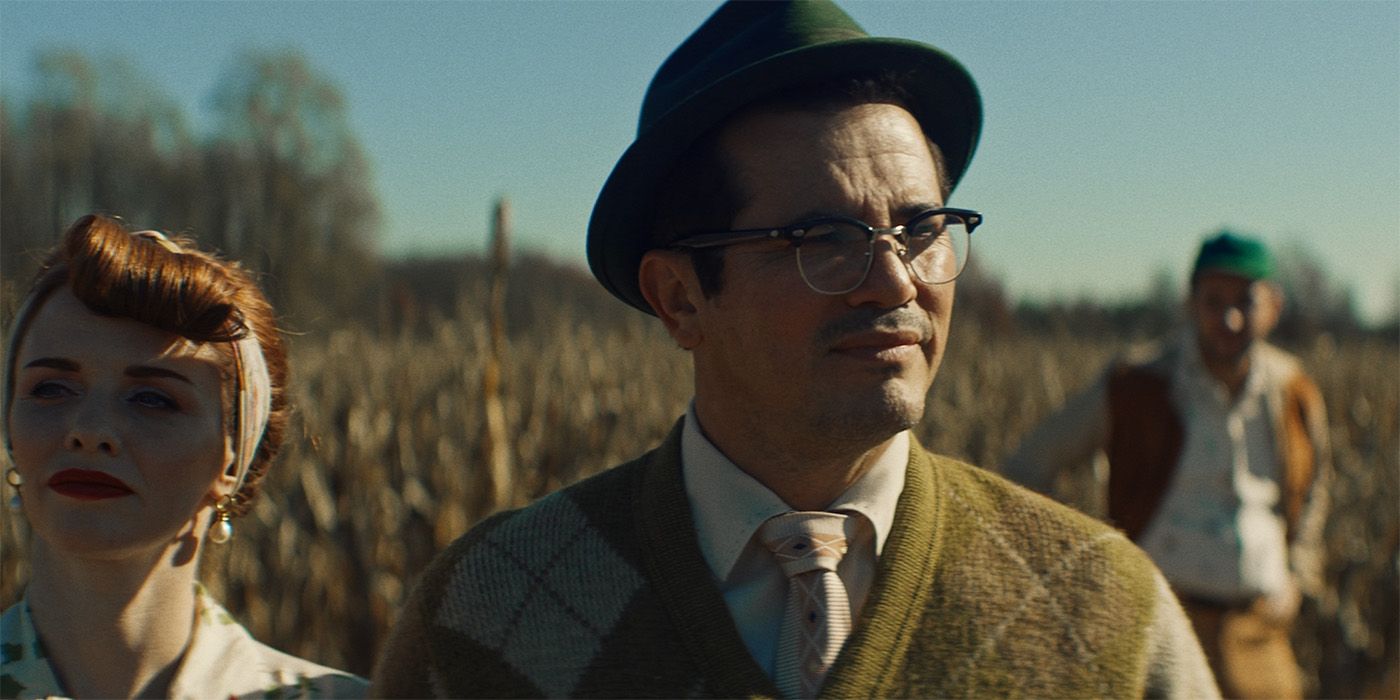
John Leguizamo Struggles With the American Dream (and Aliens!) in First 'The Green Veil' Trailer [Exclusive]
The series will help launch new (and free) streaming platform The Network.LEGUIZAMO: I think the dining room scenes were incredible, as Hani was saying, because we had about three or four of them, and we had to modulate it because different things were happening in the script. I had new information about what she was doing, and our relationship was changing, so we had to make sure that each time that we got to a dining room scene that there were a lot of different factors, and our marriage was on the verge of falling apart, each time a little bit more. So we had to keep playing it with subtle differences, and it was wild how Hani and I were just so in sync, and the levels of love, distrust, hate, sexual tension was always present. It was pretty wild, I gotta say.
RAPPAPORT: I’ve got two, but I'll be very quick. John is an actor like no other. I'm just gonna say that we shot 25 pages of dinner scenes in a single day. There's a dinner scene in every episode of the show. I would go in and I'd be like, “This is where we're at in the arc. This is what you're gonna do,” and he would go in and he'd say, “Okay, well, just in case I'll give you three things. We'll do this version, this version, and this version.” And every single time he was so immediate, responding to Hani. It was like nothing I've ever seen before. This show would not have been possible, we would never have made the schedule, I don't think, if John had come up in theater doing one-man shows. It's that training and that diligence to be able to come in and do it that I don't think we would have ever been able to pull off. Anyway, that was my compliment to you. Never again.
LEGUIZAMO: We got it on film, so I’ll just play it over and over again.
RAPPAPORT: I think for me, the best scenes were the sex scenes, and that's not a funny thing. I'll tell you why. I'd never worked with an intimacy coordinator before. I've never done sex scenes like that. I don't think anyone's done sex scenes like this before…
FURSTENBERG: I have.
LEGUIZAMO: I’ve done a lot of sex scenes. [Laughs] But without the intimacy coordinators.
RAPPAPORT: We got this intimacy coordinator from the Public Theater in New York, and I didn't know what to expect, but it was so liberating and so freeing to be able to choreograph these scenes through her. The actors felt entirely free to play with these really violent scenes, and there was so much intention and action behind those. I know there's a lot of chatter about intimacy coordinators, alot of people like, “Why do we need them? This is bullshit.” I have to say that anyone who says that just hasn’t worked with the right artist that can come in and really make people feel comfortable, because it's an unbelievable experience.
FURSTENBERG: I think with her, also, it wasn't just that she was making it — I felt really comfortable, but she really helped us choreograph it. We were trying to figure it out, “How are we gonna do it?” It was a small space, and, “How is this gonna work?” She really [showed us] how we could use the dress, how we could use the fridge.
LEGUIZAMO: It made it more real. It allowed it to be as aggressive as it wanted to be without anybody getting hurt.
FURSTENBERG: They gave us a box to play in.
LEGUIZAMO: Nobody gets hurt, nobody gets disrespected. It makes it so much safer, easier, and everybody leaves respected.
'The Green Veil' Used iPhones for VO in the Edit
I'm always fascinated by the editing process because it's where it all comes together. How did this get shaped in the editing room in ways you didn't expect going in?
RAPPAPORT: I think anyone that's made a film knows that you write something that's different, you shoot something that fucks it all up, and then you edit it and that's completely different, and you just pray that no one sees the mistakes. I mean, this was a lonely process. I cut this over the course of, like, two-and-a-half years.
LEGUIZAMO: Because you did it mostly by yourself.
RAPPAPORT: Mostly by myself, alone. I would go and shoot a commercial, come back, cut another three weeks, go shoot a commercial, call John Ortiz and say, “Can you lay a line down on your iPhone to help me with this thing?” I’d say the same thing to everyone else. We didn't go into it with different VOs. We went into it without VOs, and then I realized we need to expand the story, and I wanted to try this thing. So that was like a recut on the show.
So you realized in the editing room the different narration per episode?
RAPPAPORT: Correct. In the editing room we realized that that would be a good mechanism to tell this story.
LEGUIZAMO: I think it's a brilliant addition, and I'd never seen it done before, like Rashomon kind of voiceovers. They're all telling us a different POV of similar circumstances, situations.
Also, it's interesting because all that VO was done in the editing room with people on their iPhones recording.
RAPPAPORT: Correct. And I wrote that after. That's exactly right. Then we'd bring people into a booth once we figured it out and figured out how to make it work. Anyone who's an editor, you guys are really messed up people. You sit in a room by yourselves all day long, every day. I mean, it's like the craziest thing in the world.
You just booked a lot of people to work with you.
RAPPAPORT: Absolutely insane… love you.
Did you end up with a lot of deleted scenes, or not at all because of the shooting schedule?
RAPPAPORT: So we shot five weeks, eight episodes, and we used almost everything. I mean, there were things that got cut or things that had to move, but I think we used almost everything in some way, shape or form, which I was really proud of. That never happens, so I feel like we found a way to fit things in, which is great. We were lean already, but…
For people that are now fans of the series, what do you think they would be surprised to learn about the making of the series?
LEGUIZAMO: I think where the series goes. You don't expect it to end– I'm trying not to ruin it for everybody because the ending, it is a historical fiction thriller, so you don't want to ruin it. You don't expect the comeuppances that are gonna happen.
How did you guys figure out the characters that you wanted to focus on in the series? Obviously in the writing process it's a blank page, so how did you realize who were gonna be the characters in the show?
RAPPAPORT: Well, I have to say, I wrote it for John. So that was always gonna be a character that we knew was gonna be hated, but hopefully understood, and anchoring everything around his sort of identity crisis. It was gonna sort of spawn out from that. So we knew that he needed a mission, that was gonna obviously be certain characters that were gonna have similar identity issues. His family was gonna be integral. But I think from the beginning it was always clear that this was a guy who had major identity issues and that was gonna be this antihero. Without spoilers, the hope is by the end you almost feel sorry for him more than you hate him because of the comeuppance. I think that was the arc I was looking to track most specifically.
John, what is it like playing someone who is doing and saying things that you fundamentally disagree with?
LEGUIZAMO: Not only disagree — despise. It's hard playing a despicable character. You also don't wanna make him not human; everybody's still human. Morality is kind of gray in everybody's mind. I just wanted to make a character that people understood. I didn't want people to like him at all — he's not likable — but he's still human and we need to understand him and understand where he came from and why he's doing what he's doing, and I think we accomplished that. To shed light on these people who are trying to pass because they're in systems that are racist and they want success and they're ambitious, and they feel like they have to betray themselves and their culture. It's important to shed light, especially because it happens a lot in Latin culture, and it's been happening since colonial times. I've seen a lot of my family members — there's a lot of denial, a lot of self hate. If you look at pictures of my family, my grandmother and all her family, everybody looks super dark, Indigenous and some Afro-Latinos, and yet everybody thinks they're white. The whiter anybody is in the family, the prettier they are. The more European-looking they are, the straighter your hair is, the less straight and black your hair is the more attractive. All those things are all still so deeply part of my family that we're trying to get over.
The Green Veil is available to stream on The Network now.


